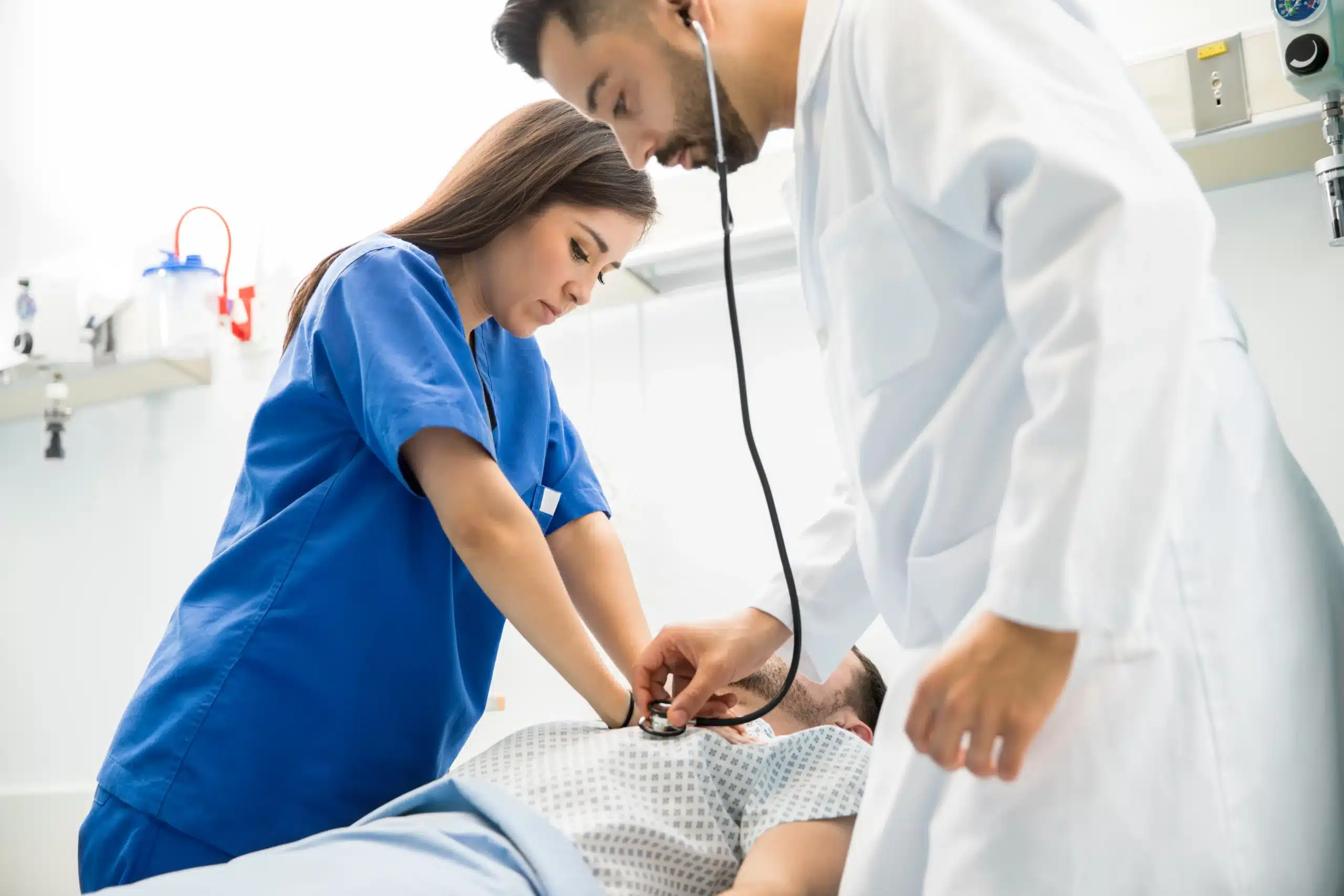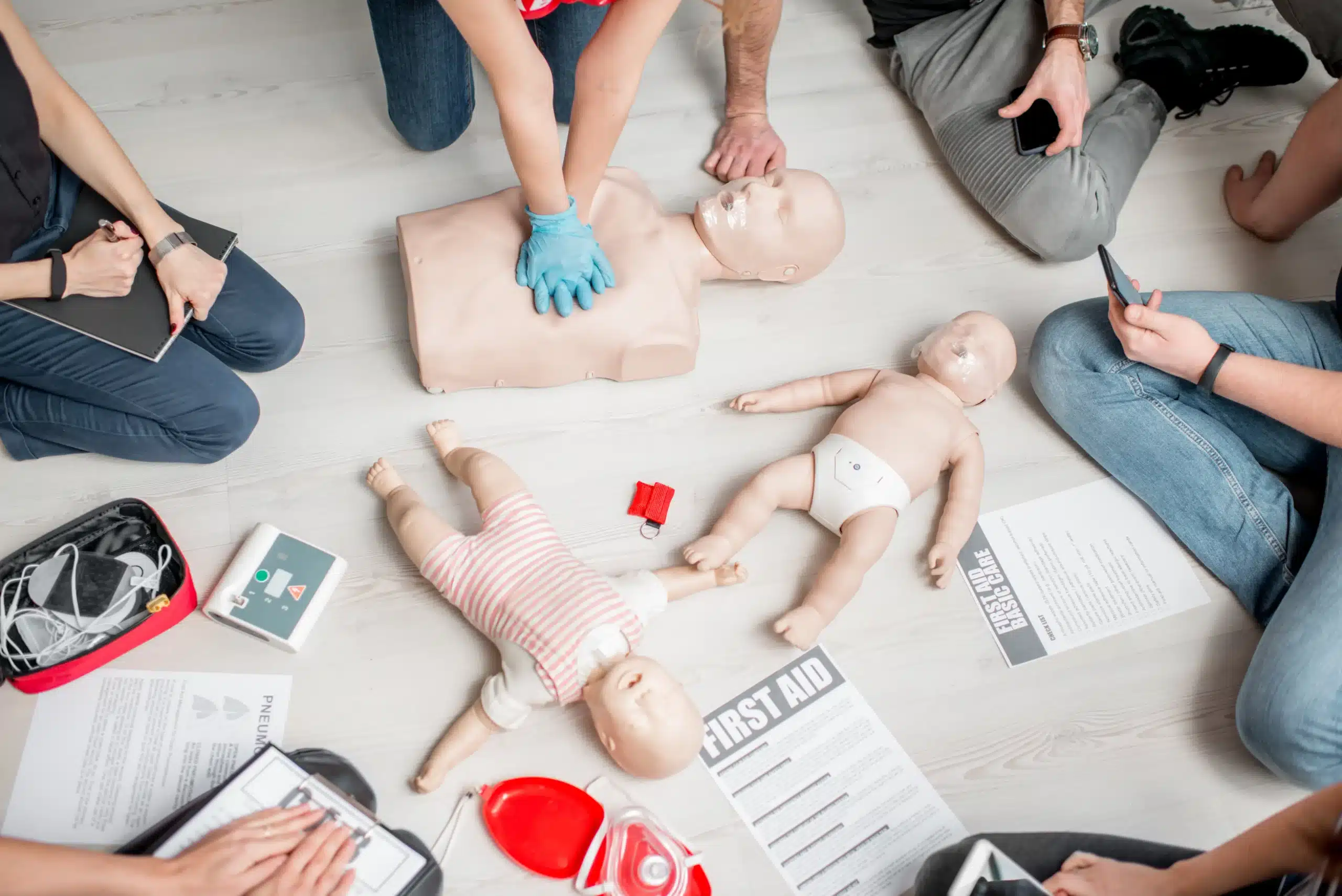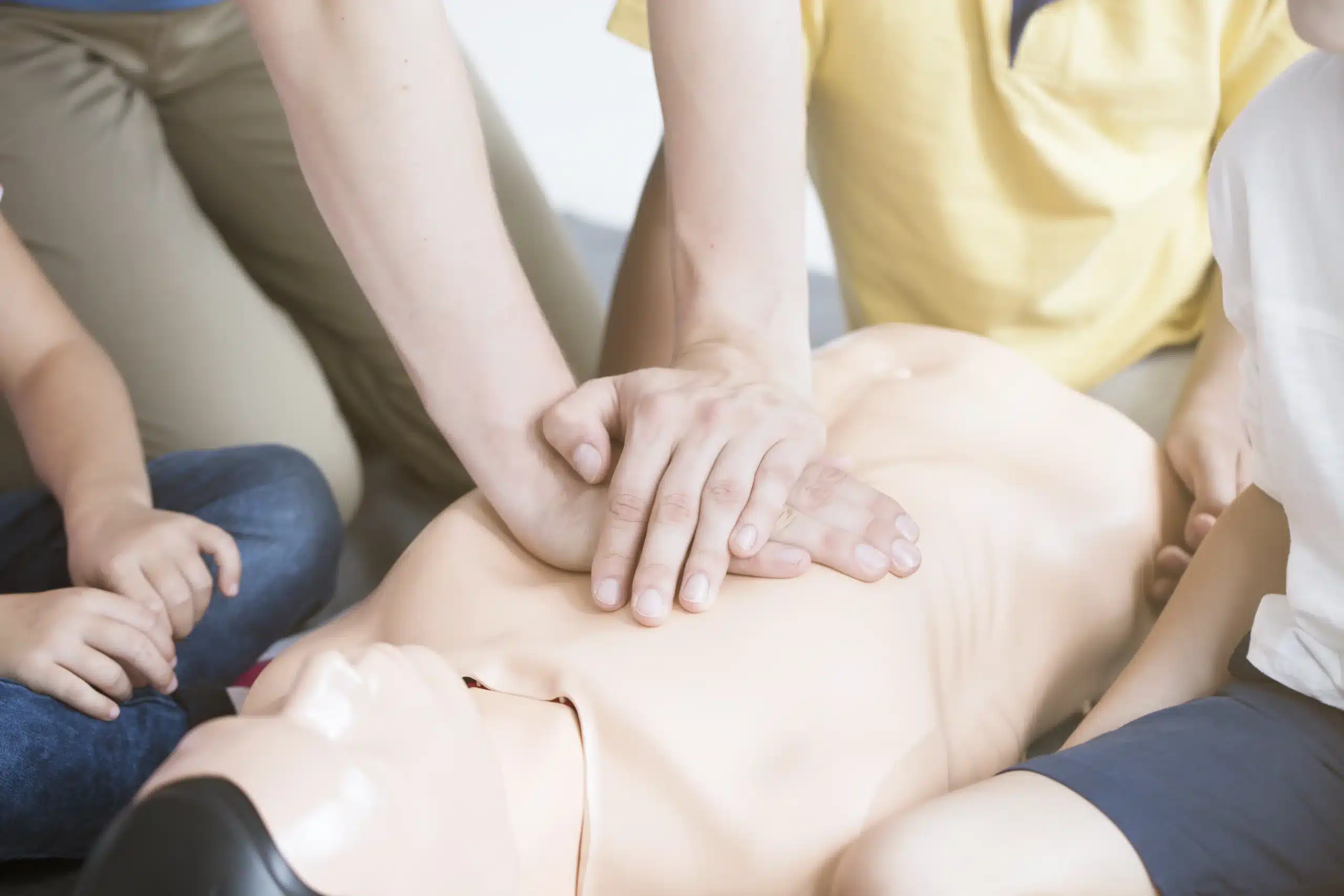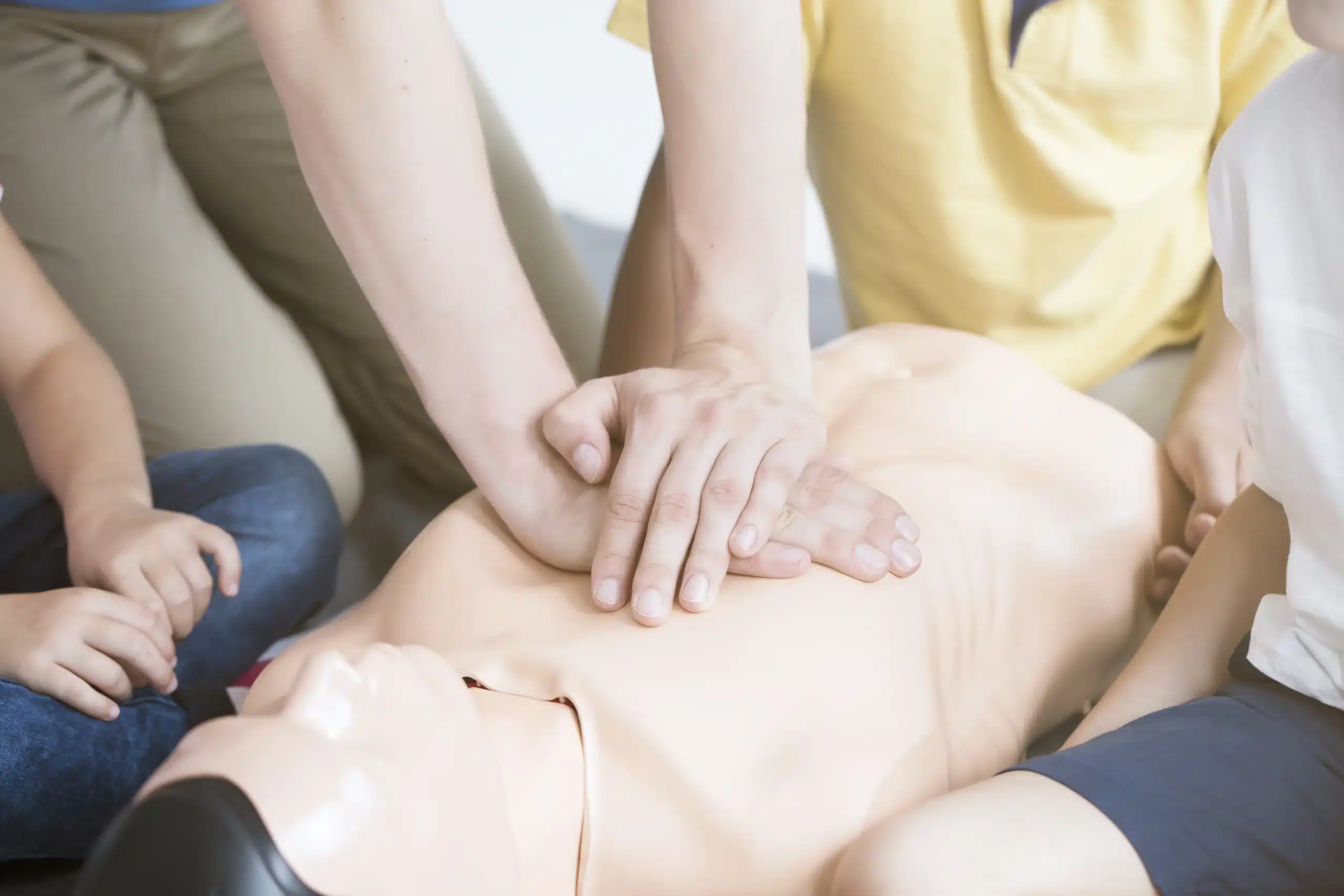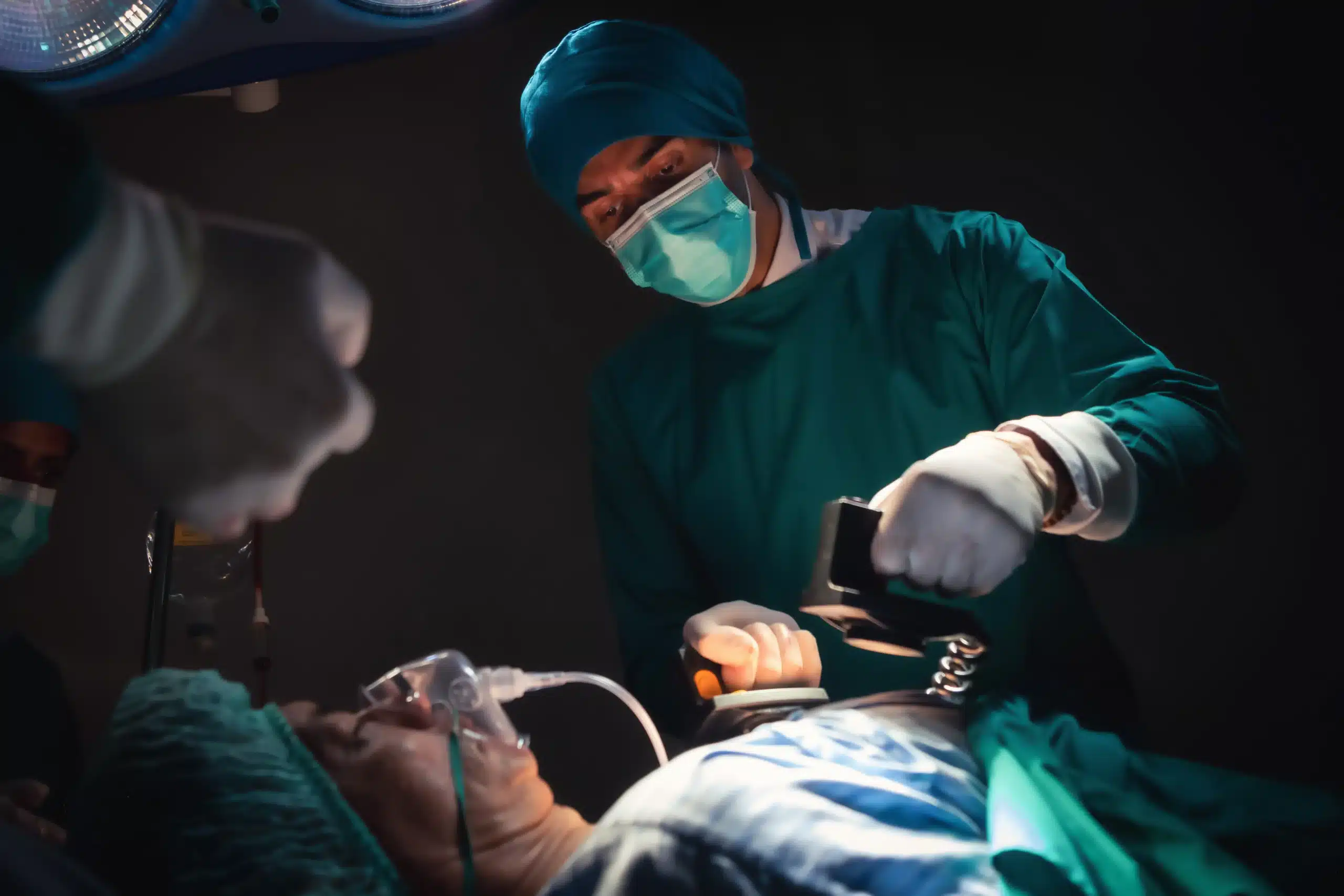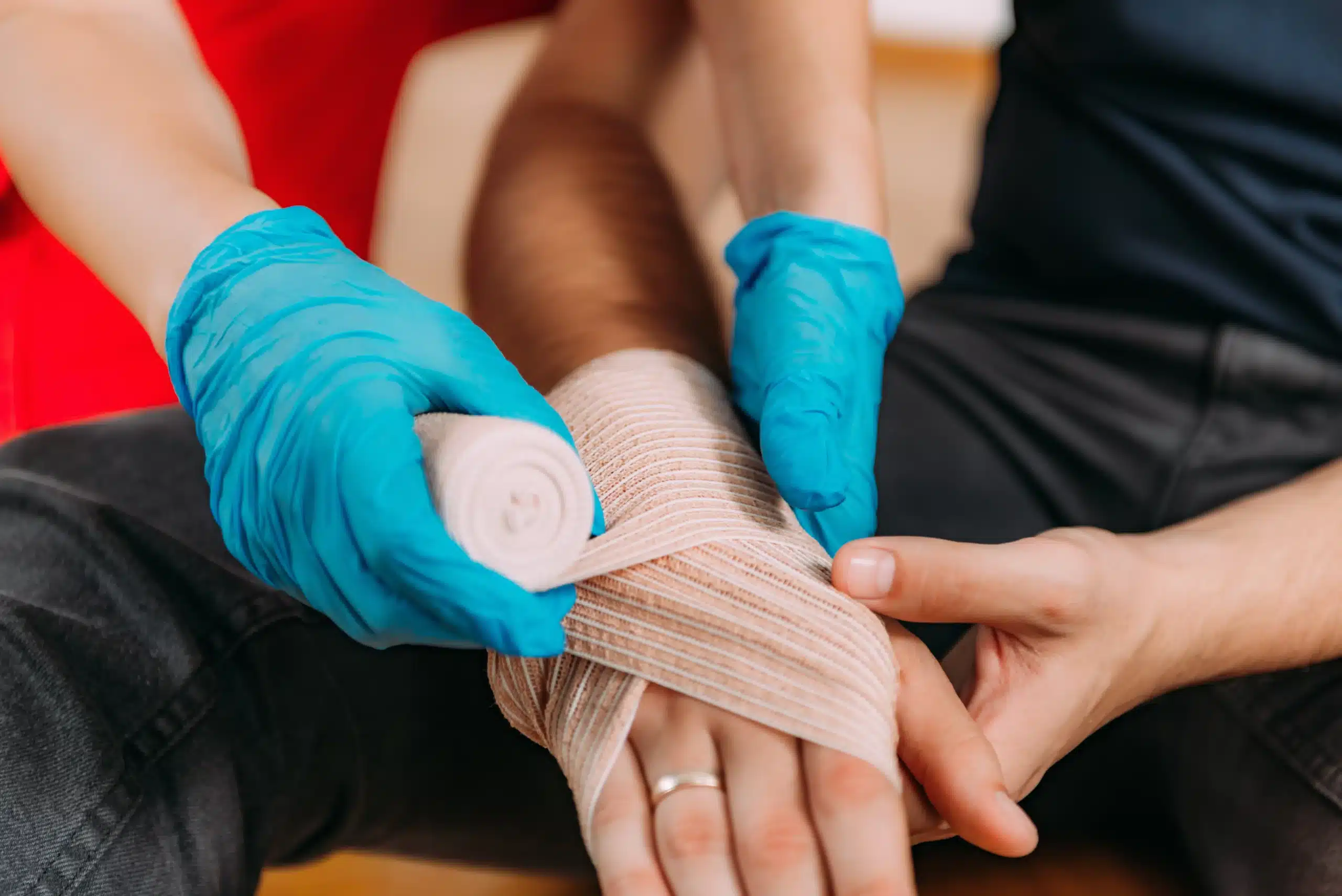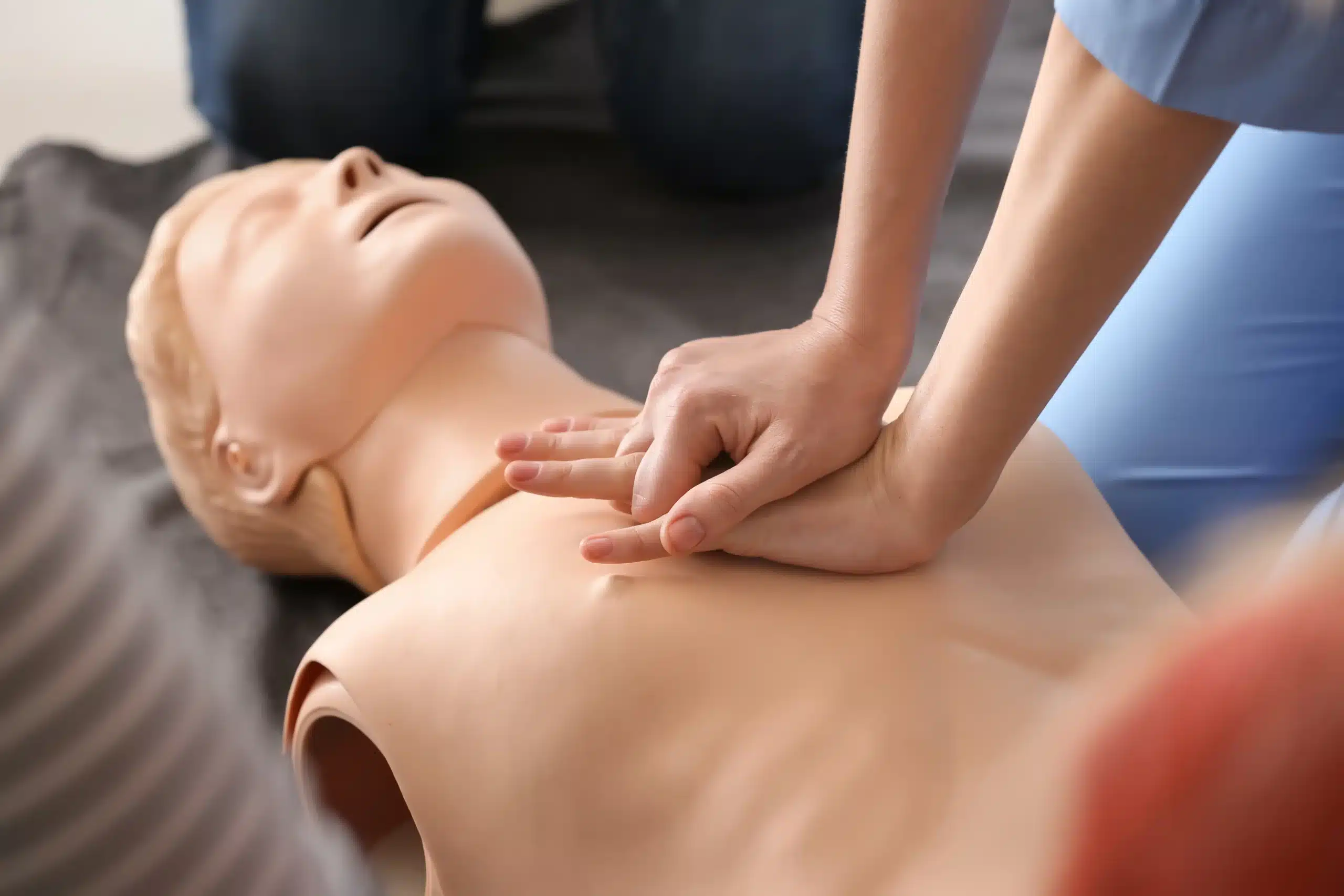In a medical emergency, seconds can matter. Having the skills to provide immediate assistance can significantly impact someone’s chances of survival. Basic Life Support (BLS) training empowers you to respond effectively in critical situations, providing essential care until professional help arrives. If you’re searching for “BLS classes near me,” you’re in the right place. This guide covers everything from the core skills taught in BLS training to finding the right course and understanding certification requirements. Whether you’re a healthcare provider or simply want to be prepared for any situation, this article will help you find the right BLS training to meet your needs.
Key Takeaways
- BLS builds essential life-saving skills: It goes beyond basic CPR to include AED use and airway management, preparing you for various medical emergencies. Choose a course format—in-person, blended, or online (plus in-person skills check)—that suits your needs.
- Select a reputable BLS provider: Look for accreditation (AHA or Red Cross), experienced instructors, and positive reviews. Consider cost, location, and discounts when choosing a provider.
- Maintain your BLS skills: Certification typically lasts two years. Stay current with guidelines and best practices through continuing education and refresher courses to ensure you’re always ready to respond effectively.
What is BLS?
Basic Life Support (BLS) certification equips you with the skills to respond to medical emergencies. It’s a crucial first step in providing immediate care to someone experiencing cardiac arrest, respiratory distress, or an obstructed airway. BLS focuses on providing oxygen and blood circulation to vital organs until professional medical help arrives. BLS differs from CPR because it includes training on using an automated external defibrillator (AED) and relieving airway obstructions in adults, children, and infants. It goes beyond basic CPR to incorporate a broader range of life-saving techniques.
Core Skills You’ll Learn
In a BLS course, such as those offered by the American Heart Association, you’ll master essential skills, including high-quality CPR for adults, children, and infants. You’ll also learn how to use an AED effectively and how to relieve choking. BLS training emphasizes teamwork and clear communication during emergencies, preparing you to confidently provide assistance as part of a coordinated response. These skills are regularly updated to reflect the latest scientific evidence and best practices in emergency care.
Who Needs BLS Training?
BLS certification is essential for healthcare providers, including doctors, nurses, paramedics, and other medical professionals. It’s also highly recommended for those in roles requiring a basic level of medical knowledge, such as teachers, coaches, lifeguards, and childcare providers. Anyone who wants to be prepared to help in a medical emergency can benefit from BLS training. These skills can empower you to make a real difference in critical situations, potentially saving lives. For specific requirements in your profession or workplace, it’s always best to check with your employer or relevant regulatory bodies. You can also explore our low price guarantee for cost-effective training options.
Find a BLS Class Near You
Finding the right BLS class depends on your learning style and schedule. Let’s explore the different options available: in-person, online, and blended learning.
In-Person BLS Classes
In-person BLS classes offer hands-on training crucial for mastering life-saving techniques. You’ll work directly with instructors and other students, practicing skills like CPR and using an AED in a realistic environment. Organizations like the American Red Cross offer in-person BLS courses designed for healthcare providers and anyone wanting to improve their emergency response skills. This format is ideal for those who learn best through direct interaction and practice. Los Gatos CPR Classes also offers daily in-person BLS classes in over 60 cities. Check out their group discounts for even better value.
Online BLS Classes
If you need a flexible learning option, online BLS classes might be a good fit. You can work through the course material at your own pace, often fitting it around your existing commitments. However, keep in mind that the American Heart Association (AHA) requires a hands-on skills assessment for BLS certification, so there’s no completely online option for AHA certification. Think of online BLS courses as a convenient way to learn the theory before attending an in-person skills session.
Blended Learning BLS Classes
Blended learning combines the best of both worlds. You’ll complete online coursework at your own speed and then attend an in-person session to practice your skills. This format offers flexibility while still providing the essential hands-on training. The American Red Cross offers blended learning BLS classes that fit this model. It’s a great option if you prefer a more independent learning experience but still value the benefits of in-person instruction. Contact us at Los Gatos CPR Classes to learn more about our blended learning options.
Choosing the Right BLS Provider
Finding the right BLS provider is crucial for a valuable learning experience. Here’s what to consider:
Accreditation and Certification
First, confirm the provider offers accredited BLS certification. This ensures the course meets established standards. Organizations like the American Heart Association (AHA) and the American Red Cross offer widely accepted certifications. Los Gatos CPR Classes provides AHA certifications, giving you confidence in the quality of training. A proper certification is essential for healthcare professionals and anyone needing BLS for their job. It signifies you’ve received training aligned with current best practices.
Instructor Qualifications
Look for classes taught by experienced, certified instructors. Qualified instructors bring real-world knowledge to the classroom, creating a more engaging learning experience. Check if instructors have backgrounds in healthcare or emergency services. The AHA’s BLS course is designed for healthcare professionals, emphasizing the importance of specialized instruction.
Class Reviews and Reputation
Reading reviews from past students offers valuable insights into a provider’s strengths and weaknesses. Positive reviews often highlight excellent instruction and helpful materials. Check online reviews on platforms like Google, Yelp, or Facebook. Community-based training programs often have strong local reputations. Don’t hesitate to ask the provider for testimonials. A reputable provider will be happy to share feedback.
How Much Do BLS Classes Cost?
Knowing the price range for BLS classes helps you budget and compare options effectively. Let’s break down the typical costs and what can influence them.
Average Price Range
BLS certification equips you with essential skills like CPR, AED use, and basic airway management. You can expect to find BLS classes ranging from $50 to $150, depending on the training provider, location, and course format. Occasionally, you might find more affordable options or premium courses that exceed this range. For example, Los Gatos CPR Classes offers a low price guarantee, ensuring competitive pricing.
Factors Affecting Cost
Several factors contribute to the overall cost of your BLS certification. The training organization (American Heart Association, American Red Cross, etc.) often sets base pricing. Location plays a role too—classes in major metropolitan areas might be pricier than those in smaller towns. The course format also matters. In-person classes typically include hands-on practice and instructor feedback, which can influence the price. Online or blended learning options sometimes offer more budget-friendly alternatives. Finally, any supplementary materials, like textbooks or online resources, can affect the final cost.
Discounts and Special Offers
Before committing to a class, explore potential discounts. Many providers, including Los Gatos CPR Classes, offer group discounts for multiple registrations, making it a cost-effective choice for workplaces or groups of friends. Some providers also extend discounts to students, healthcare professionals, or those who register early. Checking with local training centers or browsing online platforms for promotions is always a smart move. Don’t hesitate to contact us at Los Gatos CPR Classes to inquire about current specials.
What to Expect in Your BLS Class
Knowing what to expect can help you feel prepared and confident going into your BLS class. Here’s a breakdown of what a typical BLS course entails:
Class Duration and Format
BLS classes blend classroom learning with hands-on practice. Expect a combination of lectures, demonstrations, and skills practice. You’ll learn essential life-saving techniques, including high-quality CPR, using an AED, and basic airway management. Most BLS courses take between 4–6 hours to complete, depending on the provider and format. You can find courses offered in-person, online, or through blended learning (a mix of online and in-person components). Blended learning offers flexibility for busy schedules.
Assessment and Certification
To receive your BLS certification, you’ll need to demonstrate your skills and knowledge through practical assessments and a written exam. The practical assessment involves performing CPR, using an AED, and other learned skills on a manikin. The written exam covers the key concepts and protocols discussed during the course. Don’t worry, your instructor will guide you through everything and provide feedback to help you succeed. Upon successful completion, you’ll receive your BLS for Healthcare Providers certification card, typically valid for two years. Check with your certifying organization for details on certification validity.
What to Bring
While your BLS provider will supply the necessary training equipment, there are a few things you should bring to class:
- Comfortable clothing: You’ll be practicing physical skills, so wear something you can move around in easily.
- Notepad and pen: While not mandatory, taking notes can help reinforce what you learn.
- Water bottle: Staying hydrated is important, especially during hands-on training sessions.
- Your enthusiasm: Come ready to learn and make a difference!
BLS Certification: Validity and Renewal
Once you’ve earned your BLS certification, understanding its validity and renewal process is key to maintaining your qualifications. Let’s break down the essentials:
How Long is Certification Valid?
BLS certifications are typically valid for two years. This timeframe is established by organizations like the American Heart Association and the American Red Cross to ensure professionals refresh their skills and knowledge regularly. Knowing your certification’s expiration date is crucial for staying current. Mark it on your calendar or set a reminder so you’re prepared to renew in advance.
Recertification Options
Before your BLS certification expires, you’ll have several options for renewal. Many providers offer recertification courses, which are often shorter than the initial certification course. These streamlined courses cover essential updates and allow you to demonstrate continued competency. Some providers also offer renewal courses for those whose certifications have recently lapsed, usually within 30 days. Check with your certifying organization for specific guidelines and available recertification options. Los Gatos CPR Classes offers convenient BLS renewal courses to help you maintain your certification.
Staying Up-to-Date with BLS
Even with a valid certification, staying informed about the latest BLS guidelines and techniques is essential. The medical field is constantly evolving, and best practices are regularly updated. To ensure you’re providing the most effective care, take advantage of online resources, continuing education opportunities, and refresher courses. Medicus Training offers valuable insights and tips for mastering BLS skills and staying current with evolving guidelines. Actively seeking out new information demonstrates your commitment to providing high-quality care and strengthens your confidence in emergency situations. Consider subscribing to relevant publications or following reputable organizations like the American Heart Association for updates and advancements in BLS.
Top BLS Class Providers
Finding the right BLS class provider is crucial for a high-quality learning experience. Here are some well-regarded organizations and companies offering BLS certification:
American Heart Association (AHA)
The AHA is a leading authority on CPR and emergency cardiovascular care. Their BLS for Healthcare Providers course is widely recognized and respected. It covers essential life-saving skills such as high-quality CPR, AED use, and choking relief for adults, children, and infants. The AHA’s focus on evidence-based practices ensures their training reflects the latest scientific guidelines.
American Red Cross (ARC)
The ARC also offers comprehensive BLS training for healthcare providers and first responders. They even have programs to help individuals become certified BLS instructors. The ARC’s widespread presence makes finding a class convenient in many locations.
National Safety Council (NSC)
The NSC is a trusted source for safety training and certifications. They offer BLS certification that emphasizes both theoretical knowledge and practical skills. The NSC’s training programs are designed to meet the needs of various healthcare settings and professionals.
American Safety & Health Institute (ASHI)
ASHI provides a range of BLS courses tailored to healthcare providers and the general public. Their focus on practical application ensures participants gain hands-on experience and confidence in applying their skills during emergencies.
ProTrainings
ProTrainings offers various BLS courses designed for healthcare professionals. Their training emphasizes practical skills and real-world scenarios, preparing participants for the demands of emergency situations.
Los Gatos CPR Classes
Los Gatos CPR Classes provides hands-on BLS training with a focus on practical skills and immediate feedback. Serving Los Gatos, San Jose, and Saratoga, CA, they offer a convenient option for local residents seeking BLS certification.
Common BLS Training Myths
Let’s clear up some common misconceptions about BLS training and certification. Understanding the facts is important to avoid confusion.
BLS vs. CPR Training
Many people use the terms BLS and CPR interchangeably, but they’re not quite the same. CPR (Cardiopulmonary Resuscitation) focuses on chest compressions and rescue breaths for someone whose heart has stopped. BLS (Basic Life Support) training, however, is more advanced and designed for healthcare providers and first responders. BLS includes CPR but also covers other essential skills like using an AED, bag-mask ventilation, and relieving airway obstructions. Think of BLS as a broader skillset encompassing CPR and other life-saving techniques. The Red Cross offers a helpful explanation of the differences between BLS and CPR certification.
Online-Only Certification Myths
While some BLS coursework can be completed online, fully online BLS certification from the American Heart Association (AHA) isn’t an option. The AHA requires an in-person skills assessment to verify you can perform the techniques correctly. This hands-on component is crucial for building confidence and proficiency for real-life emergencies. A discussion on AllNurses confirms the AHA’s requirement for both online coursework and an in-person skills check. So, if you’re seeking AHA BLS certification, plan for some in-person training.
Expiration and Renewal Misconceptions
Your BLS certification isn’t permanent. It’s typically valid for two years, after which you’ll need to recertify. Keep track of your certification’s expiration date to ensure you’re always prepared for an emergency. Don’t wait until the last minute! Many providers, including the Red Cross, offer recertification courses, often available shortly before your current certification expires. This allows for a smooth transition and helps you maintain your skills.
Prepare for BLS Class Success
Getting ready for your BLS class sets you up for a smoother learning experience. A little prep work goes a long way! Here’s how to get started:
Pre-Class Study Resources
Before your class, familiarize yourself with the latest BLS guidelines and techniques. Many organizations, like the American Heart Association, offer resources, such as videos and manuals, to help you understand the core concepts. Reviewing these materials ahead of time can make the in-class portion easier to grasp. It’s also smart to organize your training records. Keep digital or physical copies of your certifications and training in one place so you can easily access them when needed.
Tips for Mastering BLS Skills
BLS isn’t a “learn it once and you’re done” kind of skill. Regular practice is key to maintaining proficiency. Consider setting aside time each month to review and practice the techniques. This hands-on approach will build your muscle memory and confidence. Also, stay curious about advancements in BLS techniques and technologies. The medical field is constantly evolving, so staying informed about the latest best practices will make you a more effective provider. Medicus Training offers helpful tips for staying sharp and continuing to develop your skills. Remember, consistent practice and a commitment to ongoing learning are essential for providing high-quality BLS care.
Why is BLS Training Important?
Life-Saving Applications
Basic Life Support (BLS) certification equips you with the skills to respond effectively in medical emergencies, potentially making a life-or-death difference. BLS training covers essential techniques like CPR, using an AED, and basic airway management—your toolkit for responding to cardiac arrest, respiratory distress, and other critical situations. The moments following a medical emergency are crucial. BLS training empowers you to act quickly and confidently until professional help arrives, increasing the chances of survival and minimizing long-term complications. With BLS certification, you’re prepared to assist anyone in need, whether it’s a family member, friend, coworker, or even a stranger. Immediate, high-quality BLS is crucial and, when performed correctly, is linked to better patient outcomes.
Professional Benefits
BLS certification is a valuable asset across many professions and is often a prerequisite for healthcare roles. The American Heart Association’s BLS for Healthcare Providers course sets the standard for mastering these fundamental life-saving techniques. Holding a current BLS certification demonstrates your commitment to patient safety and high-quality care, signifying your ability to handle medical emergencies in a professional setting. Beyond basic CPR, BLS covers advanced techniques like AED use, airway management, and other resuscitation skills tailored for healthcare providers and professional rescuers. This certification can enhance your job prospects, open doors to career advancement, and boost your credibility within the medical field. Even outside of healthcare, BLS training provides added safety and peace of mind for those in education, childcare, fitness, or other fields involving public interaction. Reach out to learn more about the benefits of BLS certification for your career.
Related Articles
- BLS Certification in Saratoga: Your Guide – Los Gatos CPR Classes
- BLS Certification in Saratoga: Your Comprehensive Guide – Los Gatos CPR Classes
- BLS Courses in Los Gatos: Your Complete Guide – Los Gatos CPR Classes
- BLS Certification in San Jose: Your Comprehensive Guide – Los Gatos CPR Classes
- BLS Renewal in Los Gatos: Your Guide – Los Gatos CPR Classes
Frequently Asked Questions
What’s the main difference between CPR and BLS?
CPR focuses specifically on chest compressions and rescue breaths. BLS builds upon CPR by adding skills like using an AED, managing airways, and working as part of a team during emergencies. It’s a more comprehensive approach to life support.
How do I choose the right BLS class format for me?
Consider your learning style and schedule. In-person classes offer hands-on practice and direct interaction with instructors. Online classes provide flexibility, but remember that in-person skills testing is usually required for certification. Blended learning combines online coursework with in-person skills sessions, offering a balance of flexibility and hands-on training.
Is BLS certification mandatory for my job?
BLS certification is often required for healthcare professionals and those in related fields. Check with your employer or professional licensing board for specific requirements in your field. Even if it’s not mandatory, BLS training is a valuable asset for anyone wanting to be prepared for medical emergencies.
How can I find reliable and affordable BLS classes near me?
Start by checking with established organizations like the American Heart Association, American Red Cross, or your local hospitals and community centers. Look for providers with accredited certifications, qualified instructors, and positive reviews. Don’t hesitate to ask about group discounts or special offers to find the best value.
How often do I need to renew my BLS certification and what’s involved?
BLS certification is typically valid for two years. Recertification involves completing a refresher course that covers updated guidelines and allows you to demonstrate your skills. Keep track of your certification’s expiration date and contact your certifying organization or training provider for recertification options.
